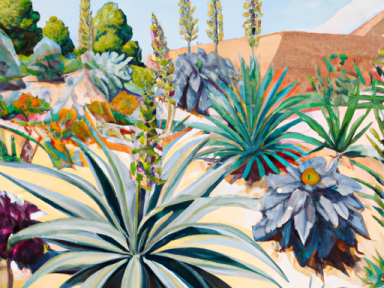Gardening in Arid Conditions: Tips and Tricks for Self-Reliance in a Dry World
As the world becomes increasingly unpredictable and the threat of environmental crises looms large, it is crucial to equip ourselves with the necessary skills to thrive in any situation. One of the essential skills for self-reliance is the ability to grow our own food, even in arid conditions. In this article, we will explore some tips and tricks to help you successfully garden in dry, arid conditions, ensuring that you can provide for yourself and your loved ones no matter what the future holds.
1. Water Management
Water scarcity is one of the biggest challenges when it comes to gardening in arid conditions. Conserving and efficiently using water is key to success in this endeavor. Here are a few ways to manage water effectively:
- Install a drip irrigation system: Drip irrigation delivers water directly to the roots, minimizing evaporation and waste.
- Capture rainwater: Set up rain barrels or tanks to collect rainwater during wet periods. This water can be used during dry spells.
- Choose drought-tolerant plants: Opt for plants that naturally require less water, such as succulents and native species.
2. Soil Conditioning
Preparing your soil for arid conditions is crucial for successful gardening. By improving the soil structure and moisture retention capability, you can create an ideal environment for your plants. Here’s what you can do:
- Add organic matter: Incorporate compost, well-rotted manure, or peat moss into your soil to enhance its water-holding capacity.
- Mulch, mulch, mulch: Apply a thick layer of organic mulch, like straw or wood chips, around your plants. This helps prevent evaporation and keeps the soil moist for longer.
- Consider raised beds: Raised beds allow for better drainage and water retention, reducing the risk of water loss.
3. Timing and Plant Selection
Choosing the right plants for arid conditions and timing your planting well can make a significant difference in the success of your garden. Here’s what you need to know:
- Opt for drought-tolerant plants: Some plants, like cacti, agave, and lavender, are naturally adapted to arid conditions and require minimal watering.
- Plant at the right time: Start your garden during the cooler months or at the beginning of the rainy season. This gives your plants a head start before the heat and dryness set in.
- Use shade and windbreaks: Position your plants strategically, utilizing shade from buildings or other taller plants to protect them from the scorching sun.
4. Efficient Gardening Techniques
Implementing efficient gardening techniques will help you maximize the output of your garden while minimizing water consumption. Consider the following techniques:
- Companion planting: Planting specific crops together can create a microclimate that helps retain moisture and promote growth.
- Intensive planting: Make the most of limited space by practicing intensive planting. This involves growing plants close together, creating shade and reducing evaporation.
- Regular monitoring: Keep a close eye on your garden, checking for signs of pests, diseases, and water stress. Prompt action can prevent significant damage and save water.
Conclusion
Gardening in arid conditions is a valuable skill for self-reliance in an uncertain world. By implementing water management strategies, improving soil conditions, selecting appropriate plants, and utilizing efficient gardening techniques, you can overcome the challenges of gardening in dry environments. Let us not wait for a crisis to strike; let us take action now and empower ourselves with the ability to provide for our own needs, regardless of the circumstances.




GIPHY App Key not set. Please check settings